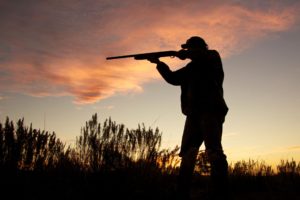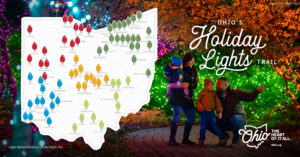A look at Ohio’s new Hunter Education Class

I have taught hunter education in Ohio for over 20 years, and to be honest it really hasn’t changed much over all that time. Sure there were some minor changes in the Ohio Hunter Education Manual and in some of the training aides (videotapes and DVDs), but for the most part it closely resembled the class that predated home computers, the internet and smartphones.
In the 1990s, most of the classes involved three nights of instruction followed by a test session on the fourth day. Instructors stood in front of the class and put out the information that students needed to know. I imagine we bored a lot of youngsters to tears, but if they wanted their hunting licenses they had to take the class, so they suffered through it.
People don’t really learn that way anymore, and the next change was in the form of the home study course; students met to get their course materials then returned a week or two later for a hands-on review session followed by the test. The test itself never changed – it was 100 questions of multiple choice, true or false, and matching.
All of that changed July 1.
On that day, the Ohio Division of Wildlife officially rolled out its new hunter education program through a commercial vendor, Texas-based Kalkomey Enterprises LLC, which is a nationwide provider of recreational safety training. Kalkomey also is the provider for West Virginia, which has a similar training requirement for first-time hunters – and the web-based portals for the online training are almost identical.
With the change comes new manuals, new tests, and new course and testing options.
It is still the law in Ohio that first-time hunters successfully complete a hunter education course. The Division of Wildlife offers three types of hunter certification courses: the traditional instructor-led course which consists of approximately 8-12 hours of classroom instruction; the home study/online course; and proficiency testing (for those 18 or above).
Log onto the Ohio Division of Wildlife’s website and find a traditional hunter education class or home study course near you and follow the online prompts to complete the registration process. For the online course go to https://www.hunter-ed.com/ohio/ and follow the instructions there. The online training options cost $15 payable upon completion of the course – the fee goes to the provider, not the Division of Wildlife.
It is important to know that while children under the age of 18 can take the class online they will not be able to take the final examination online; they still have to show up in-person at a completion session where they will take the final examination and get their certification.
I have experimented with the online training course. First-time visitors will have to create an account with a user name, email address and password, and then answer some demographical sort of questions to proceed. Once you have the account set up, you can log in and out as often as you like, and start back up again where you left off. The class takes at least four hours and you can’t jump ahead.
For more information visit the Ohio Division of Wildlife’s website.
My initial impression about the new course is that it’s a lot tougher than it was before; the new examination is still 100 questions, but it is all multiple choice, and it requires a slightly higher level of comprehension – not just for reading the questions, but also for understanding the questions if they have someone else read them. I don’t suffer from a gatekeeper mentality. I genuinely want students to pass the class and get their hunter education certificates, but I have always thought the class was possibly too easy.
It may take hunter education instructors a little bit of time to get familiar with the new material. Keep in mind that the vast majority of hunter education instructors are volunteers who receive nothing for teaching the course; they do it because they care and they want young people to be able to safely enjoy hunting.
Jim Freeman is the wildlife specialist for the Meigs Soil and Water Conservation District. He can be contacted weekdays at 740-992-4282 or at [email protected]








